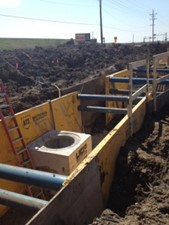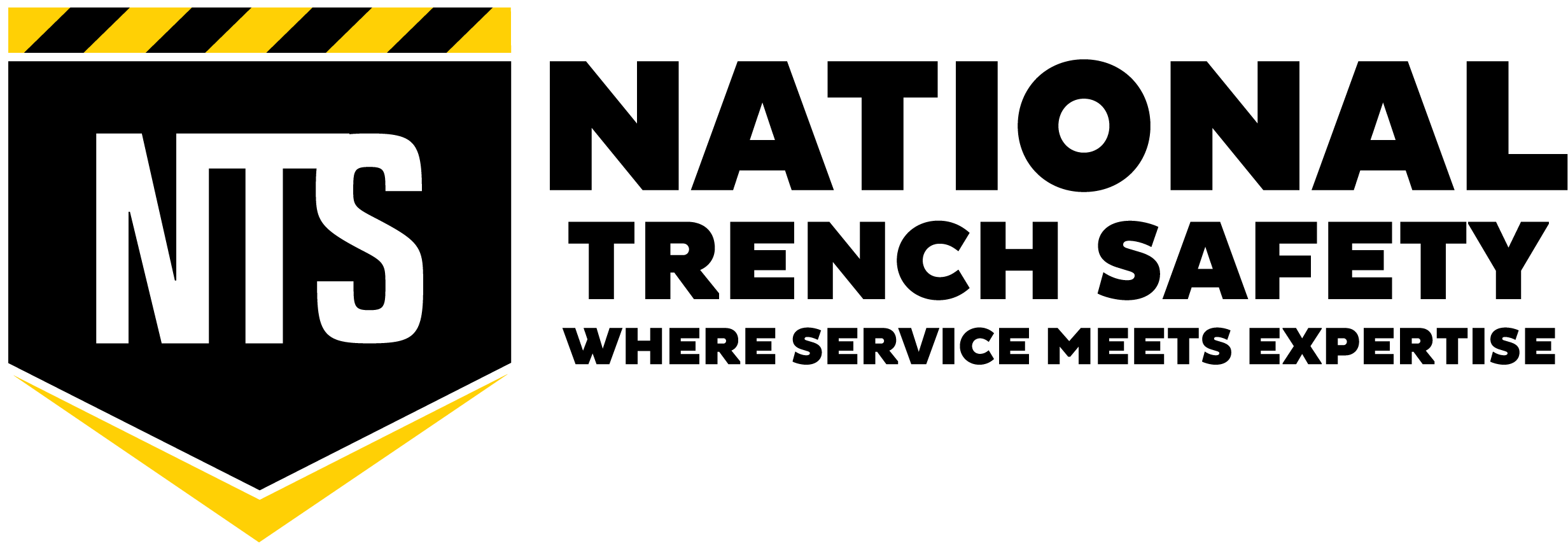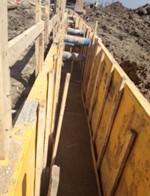Site Specific Engineered Trench Shield Application Proves Effective for Contractor
Due to increased traffic congestion around a large airport, a Midwestern municipality had initiated a project to create a new toll road into the airport to ease traffic congestion. The project would require the contractor to update and/or relocate surrounding utilities and infrastructure lines. In the beginning phase of the project, the contractor would be relocating electric lines and then pouring concrete over the PVC pipe containing the electric lines. Therefore, requiring a linear run of up to 200-ft with widths varying from 4-ft to 8-ft and depths from 8-ft to 16-ft. The contractor’s Competent Person had classified the soil as a Type B Soil for the first 12-ft of excavation depth and as C-60 Soil below 12-ft.
The contractor would be performing the work along a busy local road consisting of four lanes of traffic consequently, needing to be open cut in order to run the lines at three points. The contractor had estimated that with the workforce assigned to the project, approximately
200-ft of pipe could be laid per day. The contractor was also looking for efficiencies with the excavation requirements. The contractor called NTS to discuss shoring options for the
 project. After a thorough review of potential shoring options, the contractor elected to use Steel Trench Shields along with Steel Rock Boxes for soil and sediment containment. The contractor elected to use Site-Specific Engineering to modify the capability of the trench shields further. The engineering allowed for steel road plates to be placed between the Trench Shields at set intervals and wi
project. After a thorough review of potential shoring options, the contractor elected to use Steel Trench Shields along with Steel Rock Boxes for soil and sediment containment. The contractor elected to use Site-Specific Engineering to modify the capability of the trench shields further. The engineering allowed for steel road plates to be placed between the Trench Shields at set intervals and wi
th an engineer’s approved overlap of the shields to limit the number of shields that needed to be set as the project progressed. The Steel Trench Shields provided an efficient means of protecting the workers, the availability to change spreader lengths for lateral support and to stack additional shields for vertical support, provided a solution for the changing depths.
The contractor was also able to use the shields as a brace for forming the concrete by spacing timber forms against the Trench Shield walls. As the excavation progressed, the contractor could remove the trench shields as they worked in a particular area and move those to the newly excavated area at the other end.
The contractor was very impressed with NTS’s capability to supply protective equipment throughout the length of the project as well as the speed at which additional protection was provided to stabilize a section of the trench that encountered water at a depth of 14-ft. NTS was able to react quickly and supply Steel Plates and Vertical Shores so that the inundated area could be stabilized resuming the detained work.






